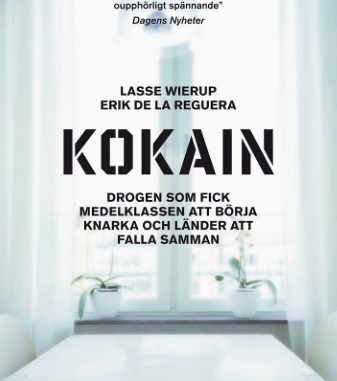
Former cocaine smuggler Pieter Tritton speaks to insider about his experience and how cocaine smuggling works.
Pieter began his journey as a small time drug dealer in the UK. He says that the illegal rave scene in the UK and lack of funding as a university student drove him to sell drugs on a larger scale. Pieter’s operation eventually supplied many big time dealers in the UK. He then began importing cocaine from Ecuador to Europe through a cartel connection. Pieter was arrested in Ecuador and sentenced to 12 years in one of the worlds most violent and corrupt prisons. He now works as a public speaker on the dangers of drugs, and also presents a show on local radio station “incapable staircase” every Friday from 4-5:30 pm GMT.
”Without this artificial price that we put on cocaine, I wouldn’t have been selling cocaine,” explains ”Freeway” Rick Ross, the notorious drug dealer from the 1980s who is widely credited with introducing crack cocaine in Los Angeles and, eventually, nationwide.
Ross recently sat down with Reason TV’s Zach Weissmueller to talk about his rise to—and fall from—power, the impact of crack on Los Angeles and the rest of the country, as well as his views on the effectiveness of the war on drugs.
”The drug war that we’re fighting right now is a total failure,” Ross says. ”There’s more drugs on the street of America than ever before.”
In the interview, Ross tells of how he managed to build a cocaine empire by shrewdly saving and investing his profits, pioneering new business models, and switching from powder cocaine to crack cocaine. When asked what was so attractive about selling cocaine, Ross answers quickly: ”The money.”
Gary Webb, the Pulitzer prize-winning reporter who broke the story of the CIAs involvement in the importation of cocaine into the U.S., died December 10, 2004, reportedly from self-inflicted gunshots to the head.
It was a tragic end to a brilliant, and tragic, career.
In August 1996, the San Jose Mercury News published Webbs 20,000 word, three-part series entitled Dark Alliance. The articles detailed the nexus between a California coke kingpin, CIA officials and assets and the Nicaraguan Contra army, whose funding had been cut off by an act of Congress in the mid-80s. Webb found evidence that the CIA had direct contact with the smugglers, knew the proceeds were going to fund the murderous Contras, and tried to cover it up when other law enforcement agencies began investigating. The most troubling aspect to the story was that the central player was no ordinary drug lord. He was the man many credit for popularizing crack, the highly addictive, smoke-able form of cocaine.
For many African-Americans, the story smacked of a grand conspiracy to destroy the black community. There were rallies in Watts and Compton, and heated discussions on black media across the country. Members of the Congressional Black Caucus called for a federal investigation. In November 1996, CIA director John Deutch appeared at Locke High School in South Central Los Angeles to personally answer to the allegations. He was met with loud jeers. It was a PR disaster.
But it was Webb who found himself on the ropes. Ironically, the CIA did little to publicly counter his allegations. Instead, the media did its dirty work for them, most notably the Los Angeles Times and the Washington Post. The mainstream media accused Webb of exaggerating his findings.
